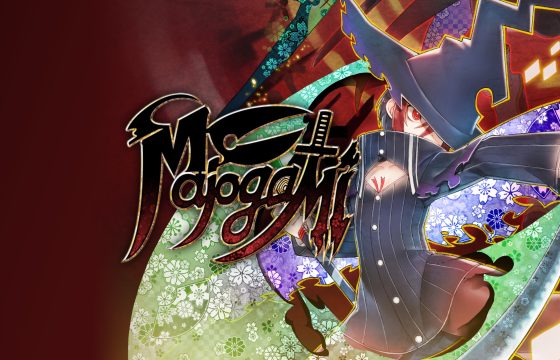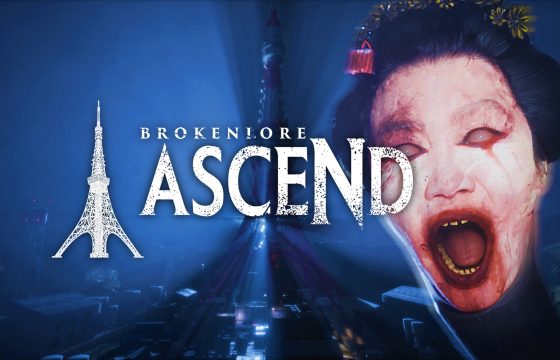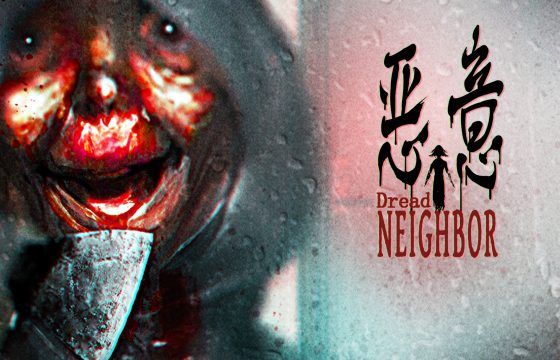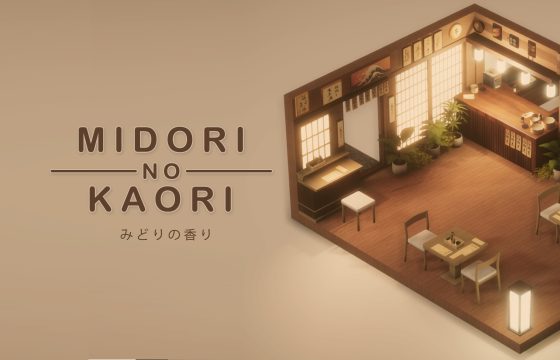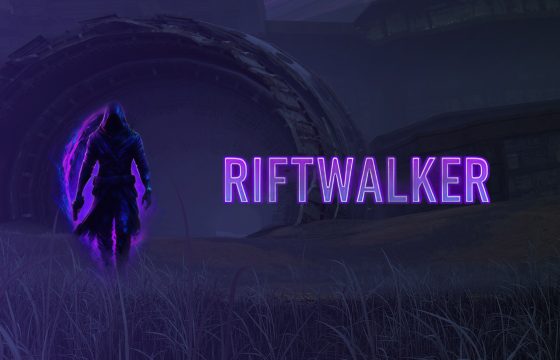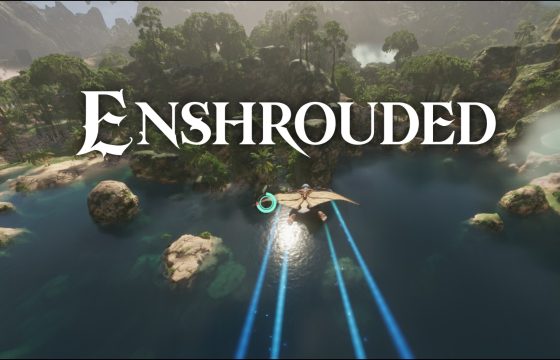Visually adorable and, according to the developers, deeply immersive and highly satisfying to play, Dewborne Dawn is a charming Metroidvania centered around combat, exploration, and character development that you’ll likely fall in love with at first glance.

We’ve said it many times before: in the vast and increasingly overcrowded landscape of Metroidvania games, it’s becoming more challenging for indie developers to carve out their own space and create a distinctive, recognizable style within the genre. With ever-rising standards, developers are almost compelled to innovate and refresh the gameplay formula to ensure it doesn’t feel derivative or boring, especially for veterans of the genre.
These conditions make game concept development extremely complex, constantly testing the creativity, inventiveness, and flair of developers. However, there are many ways a creator can captivate and amaze their audience—whether through a renewed and polished gameplay formula, sublime character design and writing, or, as in the case we present today, with magnetic art design that captures the eye at first glance.
This is exactly what happened when we first laid eyes on Dewborne Dawn, an enchanting and colorful Metroidvania developed by Mythwalk Studios, a small team of indie developers based in Raleigh, North Carolina.
At first glance, it may seem like a simple concept, but beneath this facade lies a remarkable complexity in its gameplay mechanics and narrative structure, something that certainly hasn’t gone unnoticed by fans of the genre.
So, if you consider yourself a true fan of the Metroidvania genre or are simply curious to learn more, join us on this brief journey of discovery into Dewborne Dawn.
A Glimmer of Hope amid Rivers of Death and Destruction
Launched on November 28, 2023, with a Kickstarter crowdfunding campaign, Dewborne Dawn received an exceptionally positive response, raising an admirable $70,881 (approximately 66,149 euros), surpassing its funding goal of $50,000 (46,664 euros), with support from 1,077 backers.
As mentioned in the introduction, Dewborne Dawn is a captivating and visually stunning Metroidvania currently under development at Mythwalk Studios, a small U.S.-based collective founded in late 2021 by a husband and wife duo. The project has undergone an extremely complex and challenging creative process, but thanks to the power of digital connectivity, the team expanded to include half a dozen freelancers skilled in animation, art, programming, sound design, and overall game production, transforming what started as a hobby project into a reality—realizing the dream that the two founders have always believed in.
Their mission goes beyond crafting engaging gameplay, compelling narratives, and stunning visuals. It aims to touch the hearts and minds of players, creating unforgettable journeys that leave a lasting impact.

Set in the vibrant kingdom of Ephemore, Dewborne Dawn narrates the heroic deeds of Dew, a charming and peculiar creature with a vivid sky-blue hue. Dew straddles the line between an earthly being and a supernatural entity, as if sent by Fate itself to save the world. Small in stature, Dew resembles a cross between a feline and a canine, with a thick ash-white mane adorned by two large charcoal-colored horns.
Her story, like many others in the realm of Ephemore, is shrouded in mystery and uncertainty. All we know about this small, extraordinary creature is that one day, inexplicably, she awoke within an unknown sanctuary, with no memory of herself, her past, or her purpose.
Alone, abandoned, and without a guide. Well, actually, she does have a guide, if you can call it that. Accompanying Dew on her long journey through the realm is what could be described as a sort of mentor, a seemingly rude and unsympathetic cat-dragon named Arkturus. A self-described “expert” in survival in the Final Bastion, he feels obligated to guide Dew through this strange new world. However, with all his complaining, it’s a mystery why he would take on such a task. Don’t misunderstand—at times, he can be quite understanding, provided you can endure his grumpy demeanor.
Nevertheless, if you find Arkturus’s company intolerable, you always have your most loyal travel companion: a special divine blade endowed with extraordinary power to resist and repel the plague afflicting Ephemore and its inhabitants.


Yes, you heard correctly. A disease, the most dreadful ever witnessed by earthly beings, is ravaging the once-flourishing realm of Ephemore—a powerful and insatiable cataclysm known as Spiritblight. Neither mortals nor the bravest heroes, let alone the defenseless inhabitants, have been able to halt its spread. Even the gods, armed and descended from the heavens to combat the curse, could do nothing but lay down their weapons, surrender, and succumb to the plague.
However, in their final desperate act, the deities concentrated all their power to create a safe refuge—the Final Bastion—a land immune to the plague where civilization could prosper and hope could flourish. At least, that’s what they believed until Spiritblight, some time later, threatened to devastate even this last, fragile flower of hope, ready to corrode everything in its path, piece by piece, soul by soul.
However, the plague had not yet reckoned with Dew, a creature straddling the line between the earthly and the divine. Like the morning dew that bathes nature in warmth and hope when the Earth needs it most, she shines among the vegetation, bringing life, freshness, prosperity, and well-being through her presence. She is the heroine Ephemore desperately needed, the savior who will channel all her strength to drive the curse back into the shadows and rekindle hope for humanity.
Action, Immersion, and Discovery
Dewborne Dawn’s design philosophy is built upon a three-pillar development process—exploration, combat, and immersion—that has been instrumental in shaping the game’s development, providing a robust framework for the creative process.
This concept, while seemingly straightforward in theory, proves exceedingly challenging to execute in order to create an engaging and fulfilling gaming experience for players. It involves a process that centers on two critical elements: the depth of exploration and world-building, both pivotal for the success of a quality Metroidvania game.


And thus arises the first challenge: the game world, specifically the need to design a world that stands out and resonates with players. In the case of Ephemore, we’re talking about a vibrant world characterized by vast natural expanses—from snowy highlands to verdant hills—that are colorful, almost saturated with hues, one might say, and idyllic. Unlike other productions where its pronounced dark side is visually evident, in Ephemore this subtle undercurrent, unseen but present, inevitably permeates the world, its characters, and narrative. It’s an apparently healthy, pristine world that, unbeknownst to us, is corroding from within.
To achieve this, it was essential to conceive a unique artistic direction that accentuates the qualities of the game world, capturing the myriad nuances Dewborne Dawn aims to communicate—the vibrant colors of Ephemore while aesthetically concealing the effects of the Spiritblight plague. The end result is a picturesque and vivid hand-drawn art style that highlights these features without becoming tedious or overwhelming for players.
As if that weren’t enough, the developers have ensured to raise the stakes even further, challenging themselves by adding another layer of complexity to the world-building: creating an open-world. This naturally raises the bar even higher, especially given the high standards we are accustomed to with today’s open-world video games, making Mythwalk Studios’ mission ambitious, intriguing, but undoubtedly also complex and risky.
Regarding the exploration component, as we know and as the developers emphasize, the core of any good Metroidvania lies in finding your own path forward, rather than the game itself directing the roads you take. Dewborne Dawn, as you might expect, is no exception to this rule.

The game will feature a strictly non-linear exploration and progression. Mythwalk Studios’ approach demands meticulous attention to level design while allowing players the freedom to customize their experience according to their individual playstyles. However, this freedom does not imply unrestricted autonomy. Like any Metroidvania, success requires patience, determination, and careful exploration, along with specific skills and abilities essential for accessing various areas; without these, certain regions will remain out of reach. Consequently, players will need to continually adapt their approach and, as advised by the developers, forge new paths when the previous ones are blocked. This means resisting the urge to leap onto unreachable platforms without first acquiring the double jump—because it’s simply impossible!
In each new region, you’ll uncover hidden hallways, breakable walls, and subtle entrances leading to ancient ruins where the long-lost knowledge of past architects is preserved. However, these are just the beginning of the surprises that await. In the remote corners of Ephemore lie extraordinary wonders, meticulously concealed and ready to be discovered. From small and simple collectibles that deepen your understanding of the lore, to cooking ingredients, recipes that upgrade your mana and health, tablets, scrolls, artifacts, and much more—all off the beaten path.
Furthermore, another particularly interesting detail is the meticulous attention the developers are giving to Dew’s movement animations, which is not only visually impactful but also crucial in practical terms, with highly responsive controls that ensure smooth and satisfying interaction between players and the protagonist. This means Dew won’t remain static in response to your actions, nor will she react uniformly to your button presses. Even when you are AFK, Dew might react in specific ways, such as yawning, hinting that it’s time to get back in the game. The curiosity lies in understanding how interactions between Dew and players will vary across exploration and other key features of the game.

And now, let’s discuss the combat system—the perfect stage for Dew to unleash her fury and dance on the battlefield, showcasing her skillful and graceful combat abilities.
In most Metroidvania games, except for those few that have redefined or radically transformed the genre, combat is a central part of the experience. Alongside lore and exploration, it is one of the main factors determining a game’s success or failure.
Variety of approach, freedom of choice, and the prevention of repetitiveness are the cornerstones of Dewborne Dawn’s combat system. It delivers a highly frenetic, action-packed, and deeply customizable experience, drawing inspiration from iconic games like Sekiro: Shadows Die Twice, from which it inherits the Stamina gauge feature.
What does this entail? As previously mentioned, one of the primary goals of Mythwalk Studios is to offer players a variety of combat options, catering to the different playstyles that each player prefers. A highly effective approach to achieve this by providing enemies with both a health bar and a stamina bar. This allows players to deplete the stamina bar by executing combos, parrying, and applying consistent pressure on the enemy. Once the stamina gauge is broken, the enemy will lower their guard, giving you the opportunity to execute a one-hit kill.
And that’s not the only advantage at your disposal. Throughout your journey in Ephemore, you won’t just face enemies eager to defeat you, but also allies ready to assist you in times of need.. And we’re not just referring to Akturus. Along your journey, you’ll come across true allies who can join your party.
As the developers clarify, don’t make the mistake of viewing these allies as mere tools for your slaughter or pawns that blindly follow your commands. Each one has a deep connection to the lore of the world and the narrative of Dew’s journey. Sometimes they will simply join you as you progress through the world. Other times, you will need to actively perform specific quests in order to gain their trust. Each of these potential friends have their own stories to tell, and their own conflicts that need resolution. Every single ally provides something unique in combat, and attempting to befriend them all will be more than beneficial to your cause.


Last but certainly not least is immersion, one of the most challenging aspects for developers in the creative process. It’s not just the spark that captures players’ attention at first glance but also what compels them to stay.
So, how can a gaming experience be made immersive? Recognizing that each experience is inherently subjective, immersion occurs when it envelops, captivates, and draws us in, sometimes for an extended period, leaving a lasting impression on our souls. This can be accomplished through various elements such as a poignant narrative, complex thematic depth, an enveloping and evocative OST that seamlessly fits the context, and, of course, through emotionally compelling dialogue and well-placed plot devices.
While it’s not our place to judge which tools are right or wrong, as users, it’s our responsibility to personally assess whether the experience was immersive or fell short. Like every developer and studio, the team at Mythwalk Studios has crafted their own approach to creating immersive projects. This approach is exemplified in Dewborne Dawn through an intriguing four-point program, which we can consider as the game’s primary elements through which developers aim to immerse players. Let’s briefly explore these elements:
- Gorgeous Art: Beautiful hand-crafted environments filled with a multitude of parallax layers and VFX, to give an aesthetically pleasing experience at every turn.
- Environmental Storytelling: Discover the history of the world through your interactions with it!
- Compelling Characters: Meet a colorful cast, full of depth, conflict, and ambitions! Experience their personalities and eccentricities first-hand!
- Campfire Bonding: Set up campfires at specific locations, allowing you to cook, bond, and build relationships with your party members.

Our Expectations for Dewborne Dawn
Will Dewborne Dawn hit the mark? At this stage, it’s still challenging to definitively answer this question. However, what we’re certain of is that it’s a project with strong potential that could truly make a mark in the Metroidvania landscape.
Our only uncertainty, which will only be resolved once we have the opportunity to test the game firsthand, is whether the experience will live up to expectations and deliver on the promising concepts shown by the developers so far. Although we refrain from jumping to conclusions, what we’ve seen thus far has pleasantly impressed us both artistically and conceptually. We hope to confirm these impressions once we get hands-on with the game.
As of now, Dewborne Dawn does not have a release date. However, taking a look at the Kickstarter campaign tiers, we can see that rewards across various tiers are scheduled for delivery by late 2025, indicating that, barring unforeseen issues, the game is likely to be released in 2025. It’s crucial to emphasize that our statement is not an official announcement from the developers. Therefore, we await confirmation or clarification from them before drawing any conclusions!
Regarding platforms, the game has been announced for PC and Nintendo Switch. However, it’s possible that in the future, the developers may consider extending the release to PlayStation and Xbox as well.
For the latest updates on Dewborne Dawn, stay tuned with us and keep an eye on the game’s official X account to stay updated on the latest news regarding Mythwalk Studios’ new game.
That’s all for now. See you in Ephemore!


